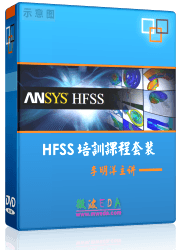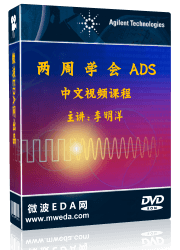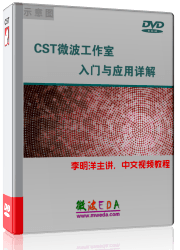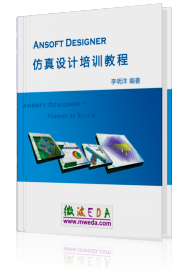|
 Ansoft Designer / Ansys Designer 在线帮助文档: Ansoft Designer / Ansys Designer 在线帮助文档:
Script Guide >
Output Variable Script Commands >
CreateOutputVariable >
SimValueContext
SimValueContext
SimValueContext holds context information for
a trace, and describes how data for a trace should be extracted from
the simulation. SimValueContext contains a list of 14 required initial
values:
SimValueContext (
Domain ID, Calculation Type, Number of Cycles, Rise Time,
Step, Impulse, Context ID, Window Width,
Window Type, TDR Kaiser Parameter, Hold Time, DeviceName,
TDR Step Time, DR Maximum Time )
For example, the following indicates a trace in
the Time Domain, Standard Calculation with the number of cycles being
2:
"SimValueContext:=", Array(1, 0, 2, 0, false,
false, -1, 1, 0, 1, 1, "", 0, 0)
Additional, context-specific values may follow
the required values, as described in subsection 15 below.
1. Domain ID
2. Calculation Type
3. Number of Cycles — Used in Time
Domain in HarmonicBalance analysis.
4. Rise Time — Not used by Designer/Nexxim.
5. Step — Not used by Designer/Nexxim.
6. Impulse — Not used by Designer/Nexxim.
7. Context ID — Not used by Designer/Nexxim.
8. Window Width — Not used by Designer/Nexxim.
9. Window Type — Not used by Designer/Nexxim.
10. TDR Kaiser Parameter — Not used
by Designer/Nexxim.
11. Hold Time — Not used by Designer/Nexxim.
12. DeviceName — Not used by Designer/Nexxim.
13. TDR Step Time — Not used by Designer/Nexxim.
14. TDR Maximum Time — Not used by
Designer/Nexxim.
15. Context-specific values — Used
in Time Domain in HarmonicBalance analysis.
Context-specific values are entered in the format
"key, true/false, keyvalue", where:
—
"key" is the name of the key being set.
—
“true/false” indicates whether the key is a string value.
—
"keyvalue" is the value of the key.
—
The order of the context keys is not significant.
—
Context keys have software defaults that will be used if not provided
in the script.
Example:
"SimValueContext:=", Array(1, 0, 2, 0, false,
false, -1, 1, 0, 1, 1, "", 0, 0,
"DE", false, "0",
"DP", false, "20000000",
"DT", false, "0.001",
"WE", false, "10ns",
"WM", false, "10ns",
"WN", false, "0ns",
"WS", false, "0ns"))
a. Plotting Range for Time domain in Transient
and QuickEye analysis:
b.Transient report context for Spectral domain
in Transient and System Transient analysis:
c. Eyeprobe index context for UI domain, Time
domain, Eye Measuremant domain in VerifEye and QuickEye analysis:
d. Eyesource index context for Initial Response
domain and Peak Distortion domain in VerifEye and QuickEye analysis:
e. UI domain context in VerifEye and QuickEye
analysis:
f. Distribution Context for UI Domain in VerifEye
and QuickEye analysis:
Receiver Jitter Parameters
Receiver Noise Parameters
User Defined Parameters




HFSS视频教程
ADS视频教程
CST视频教程
Ansoft Designer 中文教程
|